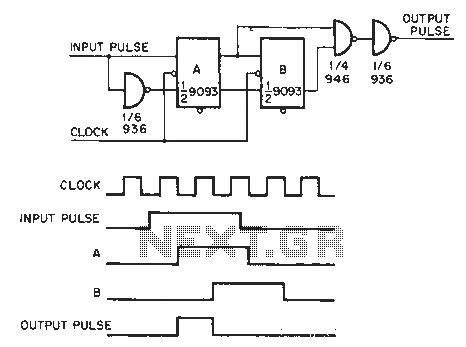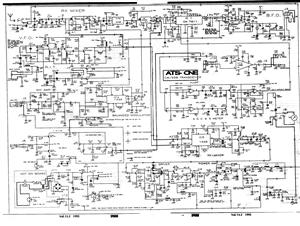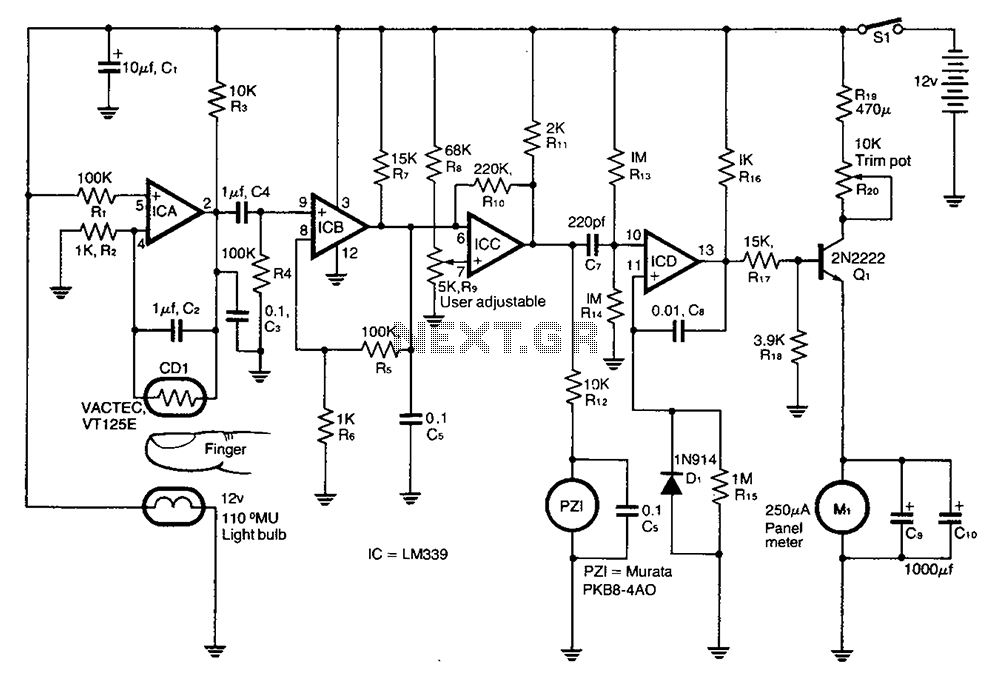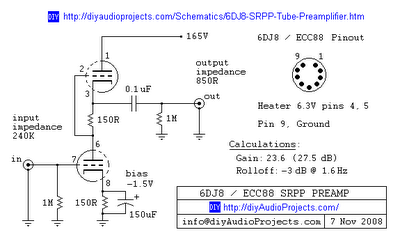
Intelligent fire alarm telephone alarm circuit - finger circuit
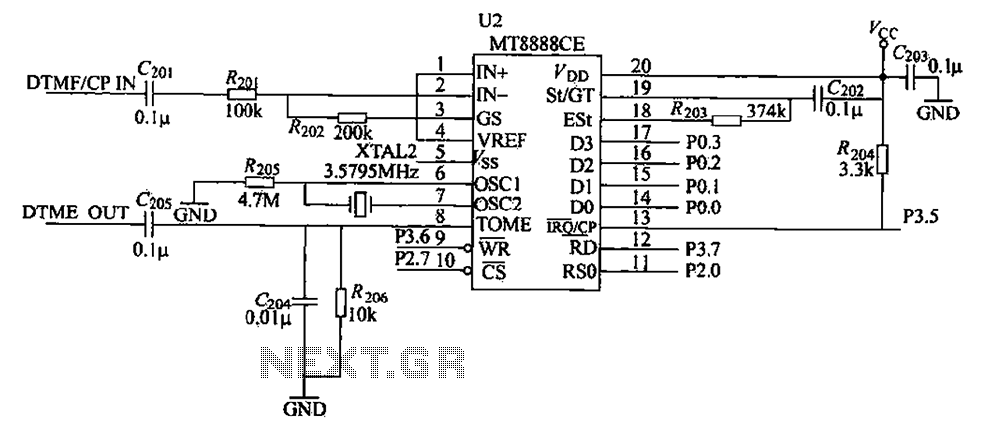
The automatic alarm circuit comprises a DTMF automatic dialing system, a password control circuit, a voice detection and alarm circuit, a telephone interface circuit, a power supply circuit, and a keyboard display circuit. The automatic dial-up alarm utilizes the MT8888 chip for DTMF signal transceiving and includes a telephone tone detection feature, allowing easy interfacing with the MCS51 series microcontroller. The reception section of the system, illustrated in Figure 13-41, employs a single-ended input configuration using resistors Rz0 1, R2U2, and capacitor C20i. The transmission section consists of components Rs, R206, G shad, Ck, and XTAL2. The control system is made up of components R2c3 and Goi. Due to the open-source nature of the IRQ and CP output terminals, a pull-up resistor R204 is utilized. Capacitor C203 serves as a decoupling capacitor. The DTMF input and output are connected to the telephone interface circuit.
The automatic alarm circuit integrates various subsystems to provide a comprehensive security solution. The DTMF (Dual-Tone Multi-Frequency) dialing feature allows the system to send signals over telephone lines, enabling remote alarm notifications. The MT8888 chip is central to this functionality, as it processes the DTMF signals for both transmission and reception.
The reception section is designed with a single-ended input, which simplifies the interfacing with the microcontroller and enhances signal integrity. The resistors and capacitors in this section work together to filter and stabilize the incoming signals, ensuring reliable operation. The transmission section is equally important, as it generates the appropriate DTMF tones that are sent through the telephone interface, allowing for clear communication with the monitoring systems.
The control system, featuring specific resistors and a microcontroller interface, manages the overall operation of the alarm circuit. The use of a pull-up resistor on the IRQ and CP output terminals ensures that the system maintains proper logic levels, preventing false triggers or erratic behavior. Capacitor C203 plays a critical role in maintaining stable voltage levels, filtering out noise from the power supply, and ensuring that the circuit operates smoothly.
Overall, this automatic alarm circuit is a sophisticated system that leverages advanced components to provide effective security measures, ensuring that alarms are accurately triggered and communicated in real-time. The integration of voice detection enhances the system's capability to respond to specific triggers, while the password control circuit adds an additional layer of security, allowing only authorized users to access the system's functionalities. Automatic alarm circuit includes a DTMF Automatic dialing, password control circuit, voice detection and alarm circuit, telephone interface circuit, power supply circuit and th e keyboard display circuit. (1) automatic dial-up alarm is not only part of the MT8888 chip DTMF signal transceiver function, and having a telephone tone detection function can, it can be easily and MCS51 series microcontroller interface. In this system, MT8 and external circuit shown in Figure 13-41, its reception section points using a single-ended input by Rz0 1, R2U2 and C20i composition, its transmission portion Rs, R206, G shad, Ck and XTAL2 composition, its control system composed of a portion R2c3, Goi.
Since the IRQ and CP output terminal is open source, so use the pull-up resistor R204. C203 decoupling capacitors. DTMF and DTMF OUT IN connected to the telephone interface circuit.
The automatic alarm circuit integrates various subsystems to provide a comprehensive security solution. The DTMF (Dual-Tone Multi-Frequency) dialing feature allows the system to send signals over telephone lines, enabling remote alarm notifications. The MT8888 chip is central to this functionality, as it processes the DTMF signals for both transmission and reception.
The reception section is designed with a single-ended input, which simplifies the interfacing with the microcontroller and enhances signal integrity. The resistors and capacitors in this section work together to filter and stabilize the incoming signals, ensuring reliable operation. The transmission section is equally important, as it generates the appropriate DTMF tones that are sent through the telephone interface, allowing for clear communication with the monitoring systems.
The control system, featuring specific resistors and a microcontroller interface, manages the overall operation of the alarm circuit. The use of a pull-up resistor on the IRQ and CP output terminals ensures that the system maintains proper logic levels, preventing false triggers or erratic behavior. Capacitor C203 plays a critical role in maintaining stable voltage levels, filtering out noise from the power supply, and ensuring that the circuit operates smoothly.
Overall, this automatic alarm circuit is a sophisticated system that leverages advanced components to provide effective security measures, ensuring that alarms are accurately triggered and communicated in real-time. The integration of voice detection enhances the system's capability to respond to specific triggers, while the password control circuit adds an additional layer of security, allowing only authorized users to access the system's functionalities. Automatic alarm circuit includes a DTMF Automatic dialing, password control circuit, voice detection and alarm circuit, telephone interface circuit, power supply circuit and th e keyboard display circuit. (1) automatic dial-up alarm is not only part of the MT8888 chip DTMF signal transceiver function, and having a telephone tone detection function can, it can be easily and MCS51 series microcontroller interface. In this system, MT8 and external circuit shown in Figure 13-41, its reception section points using a single-ended input by Rz0 1, R2U2 and C20i composition, its transmission portion Rs, R206, G shad, Ck and XTAL2 composition, its control system composed of a portion R2c3, Goi.
Since the IRQ and CP output terminal is open source, so use the pull-up resistor R204. C203 decoupling capacitors. DTMF and DTMF OUT IN connected to the telephone interface circuit.

